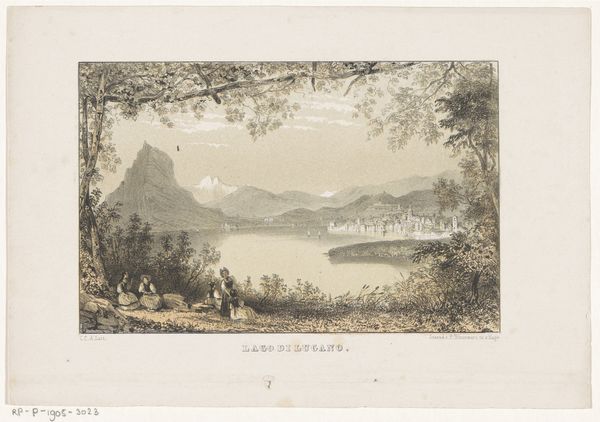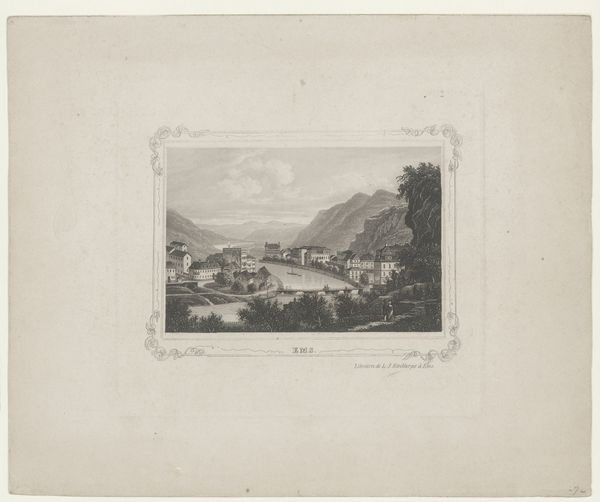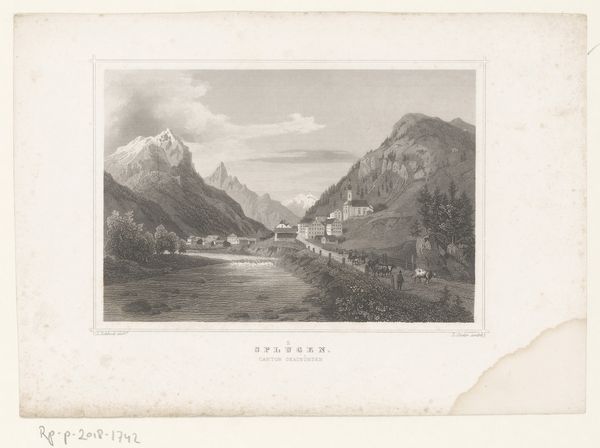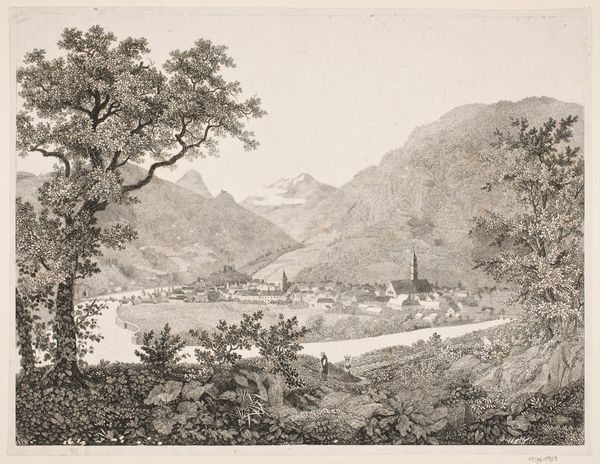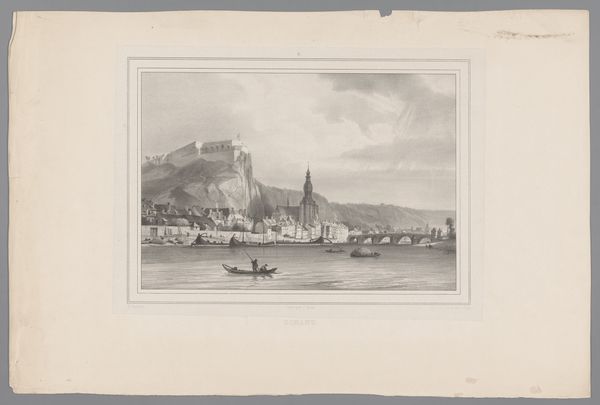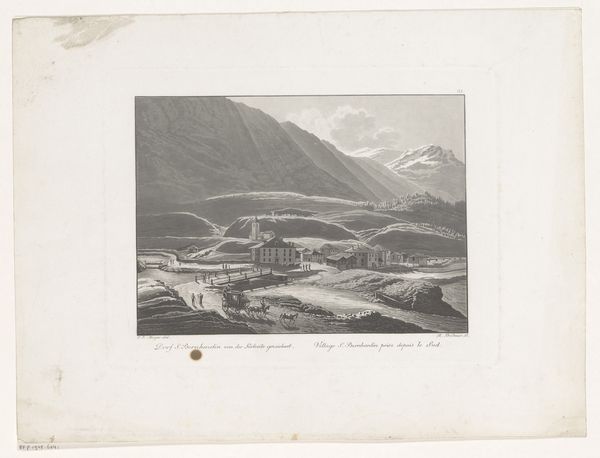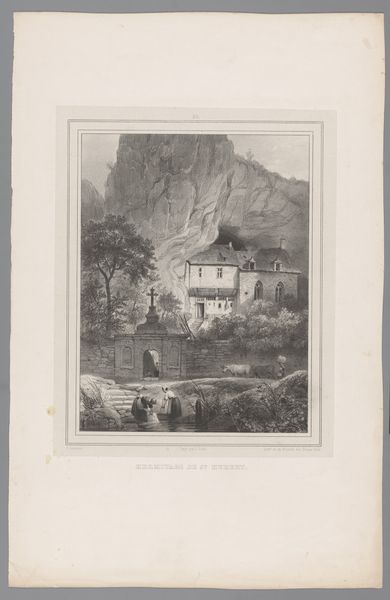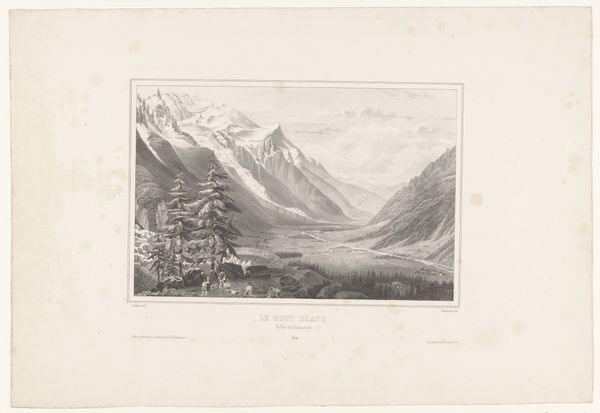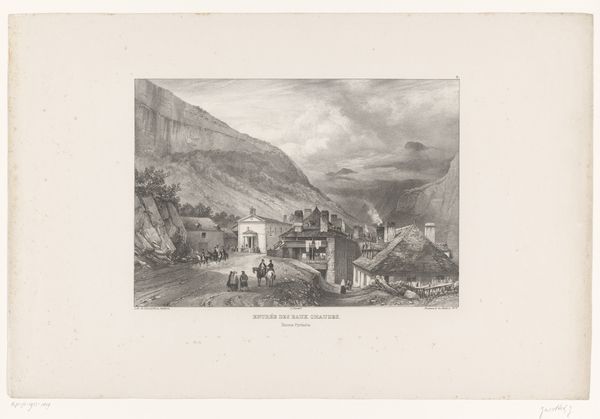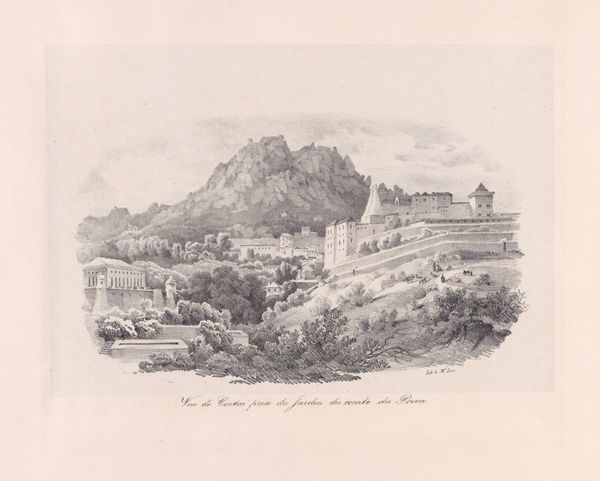
Dimensions: height 288 mm, width 402 mm
Copyright: Rijks Museum: Open Domain
Curator: What a fascinating piece! This is “Zicht op Saint-Béat,” an engraving by André Gorse, created in 1855. Editor: It’s remarkably serene, isn’t it? A balanced composition – the weight of that formidable mountain juxtaposed against the domesticity of the village nestled below. It’s a scene imbued with a quiet grandeur. Curator: It’s incredible to consider the meticulous labor involved in producing this print. Each line carefully etched, each tone precisely controlled. Prints like these democratized art, making landscapes and views accessible to a wider audience through the mechanics of production and distribution. Editor: Absolutely, but think too about what Saint-Béat represents, poised as it is near the Spanish border in the Pyrenees. Those mountains speak of pilgrimage, transition, perhaps even refuge. And then there is that castle perched above the town. Doesn’t it symbolize power, history and endurance? Curator: True, but look closer at the relationship between the buildings, the road alongside the water and figures interacting. Consider the way André Gorse organized elements on the horizontal plane, highlighting the way this print mediated perceptions of space in a period where landscape evolved with expanding industry and technologies of production. Editor: Perhaps, but I see how the very image works on our imagination! That little bridge; I'm already mentally crossing it! The people strolling on the side – a sense of the journey through time... Doesn’t the print ask questions about place and identity through shared symbolic structures and representations of the Pyrenees? Curator: I'd say this piece illuminates a cultural context interwoven into both the landscape itself, and Gorse’s artistic practice and business as an engraver. Editor: For me, the print suggests something enduring in the relationship between humankind and nature, articulated through deeply felt symbolic meanings, which touch both intellect and heart. Curator: A worthy final thought. This examination through both material construction and suggestive iconography reveals distinct yet harmonized approaches that expand the reach of historical art analysis.
Comments
No comments
Be the first to comment and join the conversation on the ultimate creative platform.


